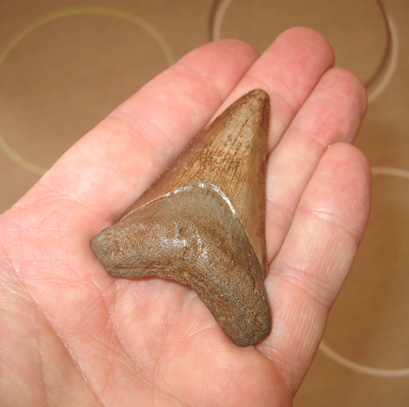Determining the Extinction Date of Megalodon
C. megalodon Extinct by 2.6 million Years Ago
The giant prehistoric shark known as Megalodon (C. megalodon) has certainly attracted a lot of scientific attention in recent years. This predatory shark, believed to be the largest, carnivorous shark to have ever existed, might have reached lengths in excess of sixteen metres. Bodyweight estimates vary, but a number of scientists have calculated weights around the twenty tonnes mark. With a mouth that could gape nearly 3 metres wide, this fish would have been capable of swallowing an extant Great White shark (C. carcharias) whole!
Megalodon Still Exists?
Some fishermen, such as those who fish the waters off South Africa have claimed that Megalodon still exists, but a team of researchers from the University of Zurich and Florida University have used a statistical technique to provide the best estimate yet of the extinction of this apex marine predator.
Safari Ltd Introduced a Model of the Giant Shark Known as Megalodon this Year
Picture credit: Everything Dinosaur
To view the range of Safari Ltd prehistoric animal models: Safari Ltd. Prehistoric World Figures.
Megalodon Extinction
Writing in the on line journal PLOS One (Public Library of Science), the researchers Catalina Pimiento (Department of Biology, University of Florida) and Christopher Clements, (Institute of Evolutionary Biology and Environmental Studies, Zurich University), used a statistical analysis to calculate the approximate time of the extinction of these predators.
By developing a better understanding of the time of the extinction, the research team are able to map the consequences of the extinction of an apex predator on the marine ecosystem. Using a mathematical technique called Optimal Linear Estimation (OLE) the scientists have calculated that around 2.6 million years ago C. megalodon became extinct. This is the first time the extinction of C. megalodon has been quantitatively assessed.
A total of fifty-three fossils of this ancient shark were used in this study, but this number was reduced to forty-two for the statistical assessment, as eleven of the fossil specimens gave the researchers less confidence over their actual age.
Optimal Linear Estimation
Optimal Linear Estimation is used for mapping the extinction of modern species, but with the abundant and widespread fossil record of Megalodon, mainly the large number of fossilised teeth associated with this species, the team were able to apply this mathematical method to calculate the time when the very last of these magnificent creatures lived.
Fossilised Tooth from C. megalodon
Picture credit: Everything Dinosaur
Although the team admit that their calculations are subject to margins of error, this work represents a refinement on previous estimates of the extinction of this shark species. Why this apex predator became extinct remains a mystery
Megalodon Fossil Material from the Miocene
Most Megalodon fossil material dates from around 16 to 11.6 million years ago (Miocene Epoch) with some further fossils known from the Pleistocene Epoch, although a lot of the fossil material associated with Pleistocene deposits were not included in this particular study. With a more accurate extinction date established, the researchers can then assess the impact of the removal of a large predator from the marine environment on other genera including cetaceans.
The date of 2.6 million years ago marks the border between the Pliocene and Pleistocene Epochs, it was after this point that the baleen whales began to increase in size and to evolve into the many giant forms alive today.
Did Whales Flourish When Megalodon Became Extinct?
As marine mammals are thought to have made up a substantial part of the bus-sized shark’s diet, although there is no conclusive evidence to suggest Megalodon fed on large whales, if Megalodon died out, did this trigger the flourishing of the baleen whales?
Commenting on the research, Catalina Pimiento stated:
“When we calculated the time of Megalodon’s extinction, we noticed that the modern function and gigantic sizes of filter feeder whales became established around that time. Future research will investigate if Megalodon’s extinction played a part in the evolution of these new classes of whales.”
Megalodon is a prime candidate for this sort of statistical analysis, due to the relative abundance and widespread distribution of its fossilised teeth. It is hoped that this technique can be applied to other extinct species to plot more accurately the impact of a single species extinction on the wider ecosystem.
The PNSO Megalodon Model
Note
Following a taxonomic revision this prehistoric shark is now known as Otodus megalodon.




